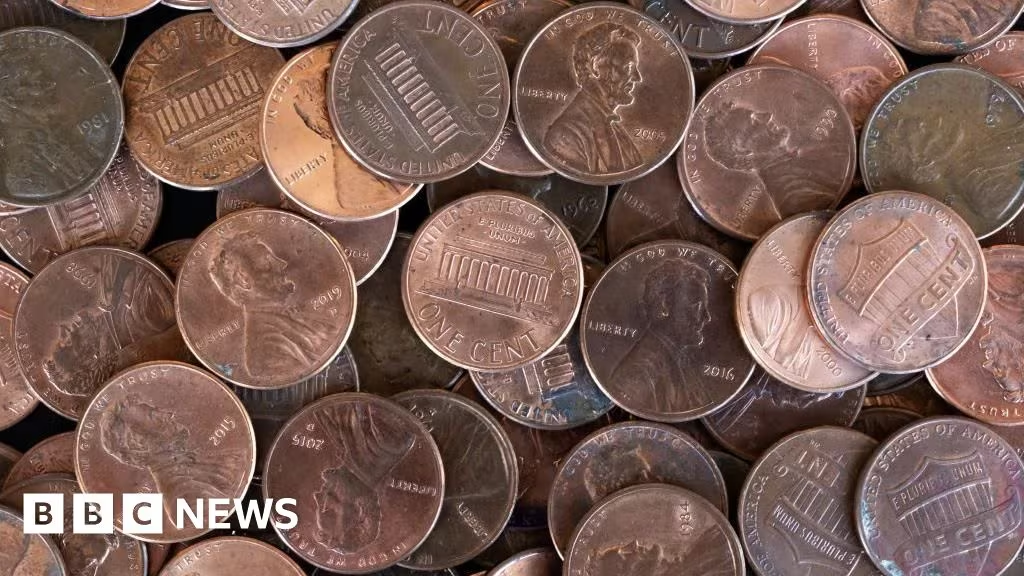The Sudden Scarcity of the One-Cent Coin
US retailers are facing an unprecedented crisis in making change, driven by the rapid disappearance of the one-cent coin from circulation. This widespread shortage has forced businesses nationwide to adopt new policies, most notably rounding transactions, fundamentally altering the way consumers pay for goods.
The root cause of this sudden scarcity is a recent policy shift: the Trump administration ended the minting of new pennies earlier this year. With the supply of new coins halted, the existing circulating stock is quickly being absorbed and hoarded, leading to a critical shortfall in the retail sector.

The Immediate Impact: Forced Rounding and Consumer Reaction
For decades, the penny has been the bedrock of precise pricing, allowing retailers to set prices ending in .99 cents. Now, without the ability to provide exact change, many stores are implementing mandatory rounding systems.
How Businesses Are Coping
Businesses, especially those dealing heavily in cash transactions, are struggling to manage the logistics of the shortage. The most common solution is rounding to the nearest five cents (the nearest nickel). This means:
- A transaction totaling $4.98 or $4.99 is typically rounded up to $5.00.
- A transaction totaling $4.91 or $4.92 is typically rounded down to $4.90.
While this system is designed to be mathematically fair over time, ensuring neither the consumer nor the retailer consistently loses out, the immediate psychological impact of being rounded up has caused friction at the point of sale. Many consumers are finding the lack of exact change inconvenient and confusing.
“The operational challenge is immense. We can’t simply tell customers we don’t have their change. Rounding is the only viable option to keep lines moving, but it requires constant communication with the customer base,” stated one representative from a national grocery chain.
The Policy Shift: Why the Minting Stopped
The decision by the Trump administration to cease the production of the one-cent coin was the culmination of a decades-long economic debate centered on the penny’s viability. The primary argument against the penny has always been simple economics: it costs more to produce the coin than its face value.
The Economics of the Penny
For years, the U.S. Mint reported that the cost of materials (primarily zinc and a copper coating) and manufacturing exceeded one cent. This phenomenon, where the production cost is higher than the monetary value, results in a net loss for the government on every coin minted. In recent years, that cost had climbed significantly, making the penny an increasingly expensive subsidy for cash transactions.

Proponents of ending the penny argued that the coin had lost its utility due to inflation. Most modern transactions, particularly those involving digital payments, do not require the one-cent denomination, and its low value means it is often discarded, lost, or hoarded rather than actively circulated.
Historical Context
This is not the first time the future of the penny has been debated. Similar discussions have occurred for decades, often citing countries like Canada and Australia, which successfully phased out their lowest-denomination coins years ago. These countries transitioned smoothly to rounding systems, demonstrating that an economy can function effectively without the one-cent piece.
Implications for a Cashless Future
The penny shortage serves as a stark reminder of the ongoing transition away from physical currency in the United States. While the shortage primarily affects cash transactions, it accelerates the trend toward digital payments, where exact change is never an issue.
Who is Most Affected?
The groups most impacted by the shortage and the subsequent rounding policies include:
- Small Businesses: Independent shops and local retailers often rely heavily on cash and may not have sophisticated point-of-sale systems to manage rounding automatically.
- Cash-Dependent Consumers: Individuals who are unbanked or underbanked, and rely exclusively on cash for budgeting and purchases, feel the immediate effects of rounding, especially if they perceive a consistent upward bias.
- Vending and Coin-Operated Machines: These systems, which are calibrated for specific coin denominations, face technical challenges and potential obsolescence without the lowest-denomination coin.

Key Takeaways for Consumers and Businesses
Understanding the immediate consequences of the penny’s absence is crucial for navigating the current retail environment.
- Embrace Digital Payments: Consumers can avoid rounding entirely by using debit cards, credit cards, or mobile payment apps.
- Be Prepared for Rounding: When paying with cash, expect the final total to be adjusted up or down to the nearest nickel. Keep small bills handy to minimize the need for change.
- Check Receipts: While rounding should balance out over time, consumers should verify receipts to ensure the rounding policy is applied correctly by the retailer.
- Businesses Must Communicate: Retailers should clearly post their rounding policies to avoid confusion and disputes at the checkout counter. Transparency is essential for maintaining customer trust during this transition.
Conclusion: The Final Chapter of the Penny?
The decision to end the minting of the one-cent coin marks a significant, if long-anticipated, shift in US monetary policy. While the immediate consequence is a logistical headache for retailers and minor inconvenience for cash users, the shortage effectively forces the US economy to adapt to a higher minimum unit of currency.
This move, driven by economic necessity, solidifies the penny’s transition from a circulating coin to a historical artifact, pushing the nation further down the path toward a truly cashless society.
Originally published: October 31, 2025
Editorial note: Our team reviewed and enhanced this coverage with AI-assisted tools and human editing to add helpful context while preserving verified facts and quotations from the original source.
We encourage you to consult the publisher above for the complete report and to reach out if you spot inaccuracies or compliance concerns.

